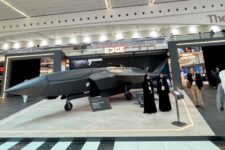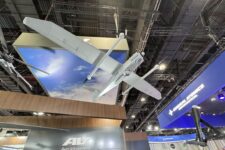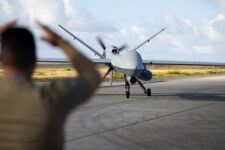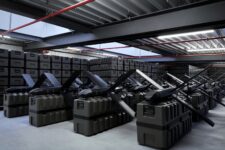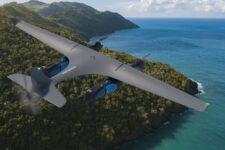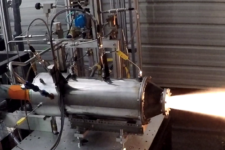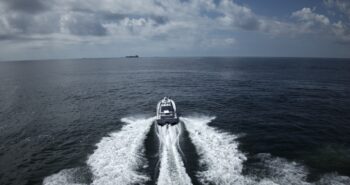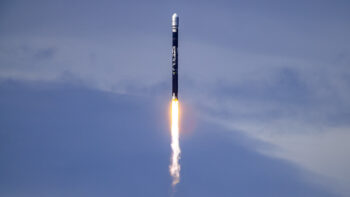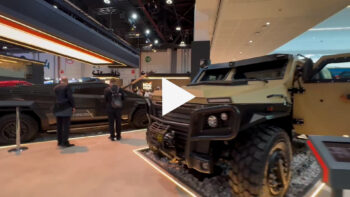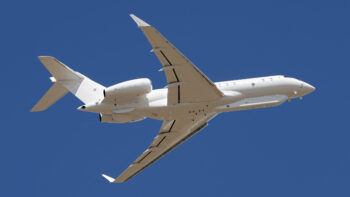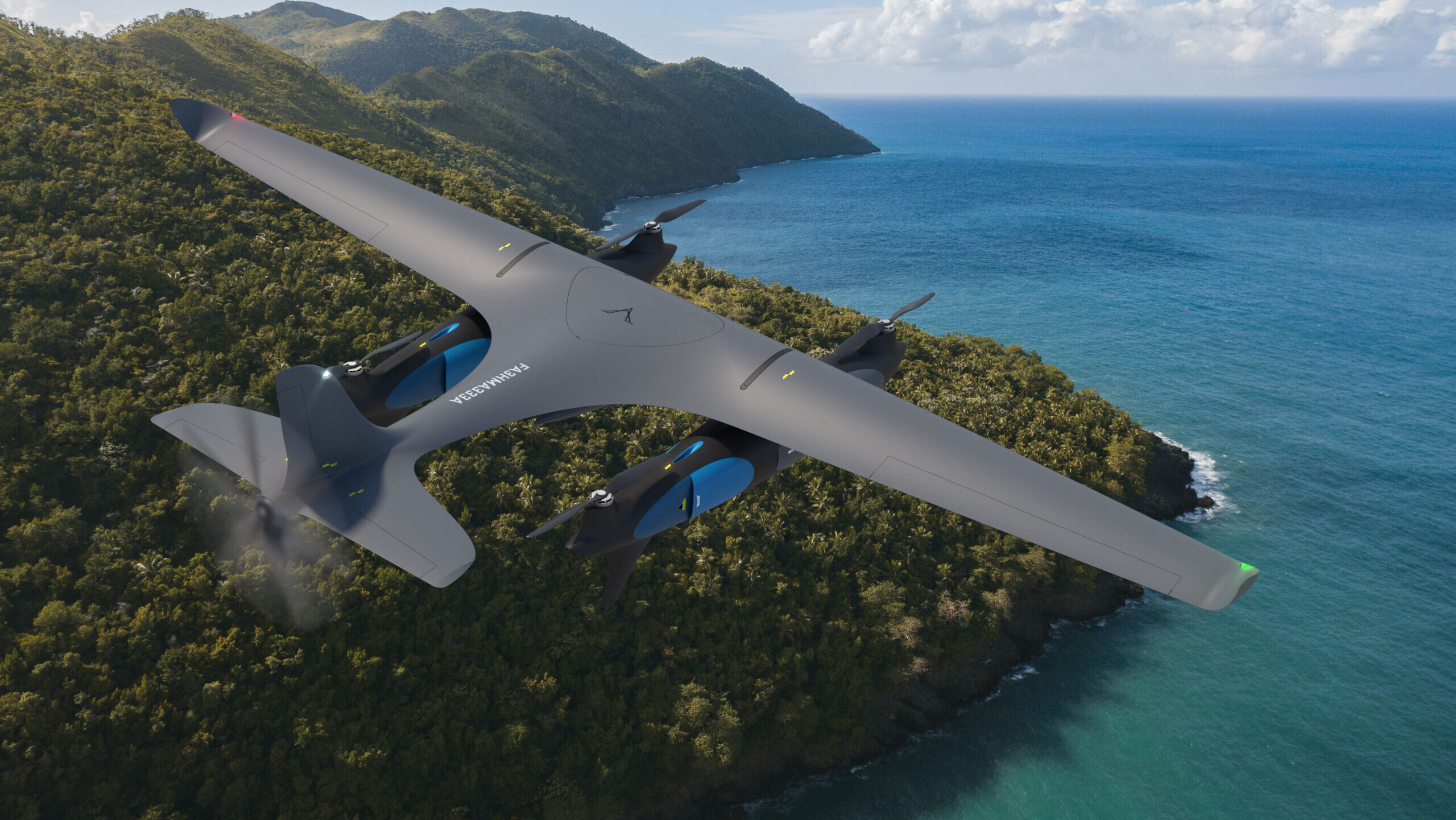
Concept image of the Raider, a hydrogen powered unmanned system from Heven Drones. (Heven Drones)
JERUSALEM — Heven Drones is unveiling a new, hydrogen-powered unmanned aerial system ahead of the upcoming IDEX conference, as the company seeks to expand its footprint in the Gulf.
Dubbed the Raider, the new platform is “tailored to provide extended endurance, versatile payload options, and field-ready modularity, addressing critical challenges faced by modern operators,” the company said in a statement.
Speaking to Breaking Defense, company CEO Benzion Levinson said the decision to pursue the new design was driven by the recent conflicts in Ukraine and Israel, which have shown drones are moving from being “flying cameras” to being “flying robots.”
The Raider is designed with a twin fuselage and vertical-take-off-and-landing capabilities. The addition to VTOL capabilities to drones has become common because it enables them to take-off from naval vessels, and also makes them easy to deploy in different environments.
The images of the drone provided by the company show an airframe with the two fuselages which also have the four rotors for the VTOL option, and a tail section, with a thin body. The drone is shown carrying a payload that is shaped like a fuel tank or targeting pod. It appears like it could also carry a munition in this format, although the company did not specify which types of payloads it could carry. However, the payload, of about 50 pounds, fits into broader US Department of Defense guidelines, which means the US is a potential market.
But the most notable thing about the drone is the decision to make it hydrogen powered, a decision Levinson said is because of the drawbacks of the existing electric and combustion power sources for most drones.
Combustion engines can fly longer but they have a thermal signature, making them easier to detect.
Switching to hydrogen meant the design of the Raider was made to take advantage of stealth-like characteristics, including what Levinson said is a low radar cross section — although he did not specify how low.
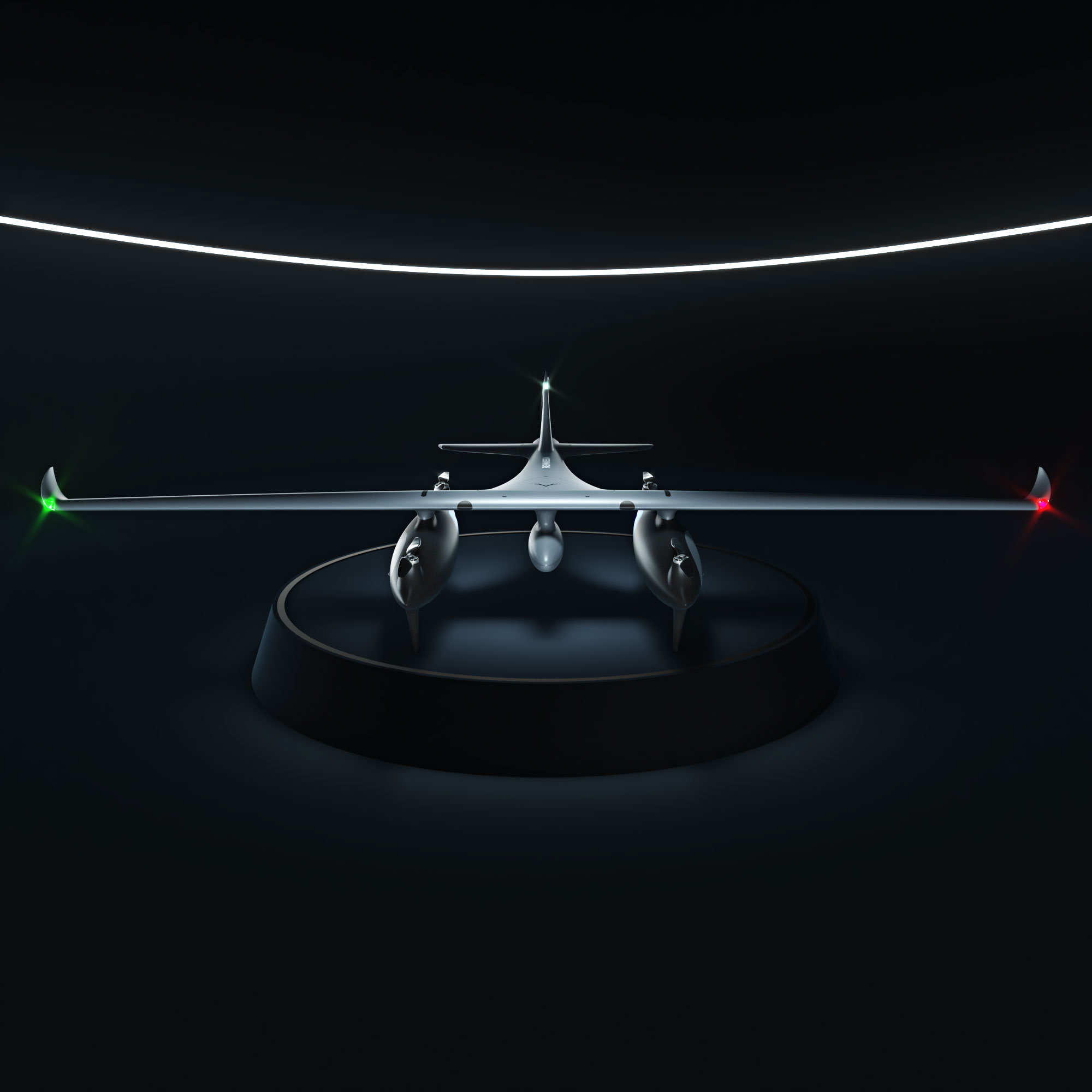
The front of the Raider, a hydrogen powered unmanned system from Heven Drones. (Heven Drones)
Levinson said the Raider uses hydrogen which “is transferred into a fuel cell and it has chemical reaction, and [the] outcome is electric.” He claimed it is five times more energy efficient than a battery. The hydrogen can be refilled at a refueling station, built by the company, that can be pulled by a vehicle such as a Humvee.
“Hydrogen lets you fly up to 1,000km,” he said, saying that Raider can operate for around ten hours.
“Raider is scheduled to fly before the end of the year and be operational in 2026,” according to the CEO. It fits the niche between small quadcopters and larger drones that resemble full-size aircraft; while not going into pricing, he claimed the Raider will be “100 to 1,000 times cheaper” than traditional MALE UAVs like the MQ-9.
Heven was founded in Israel and continues to do some research and development in Israel, but the firm is officially headquartered in Miami, Florida — important both for selling to the US and, for political reasons, for potential customers in the Middle East. That the company is unveiling the system at IDEX is no coincidence.
Still, Levinson was quick to note, the system has enough power to be relevant in the Indo-Pacific. “Most of globe is water and conflicts happen in those areas. The Indo-Pacific is a big one for the US,” he noted.

